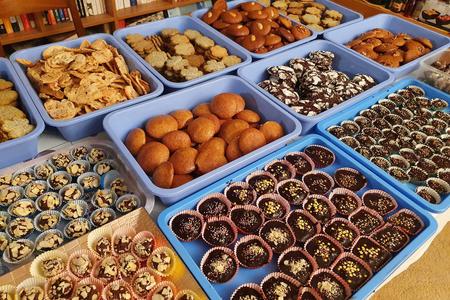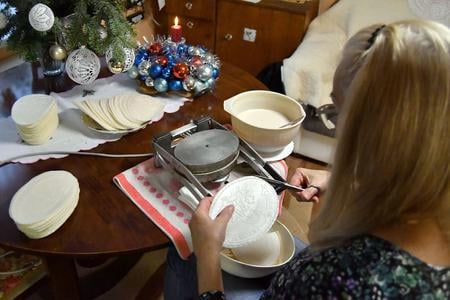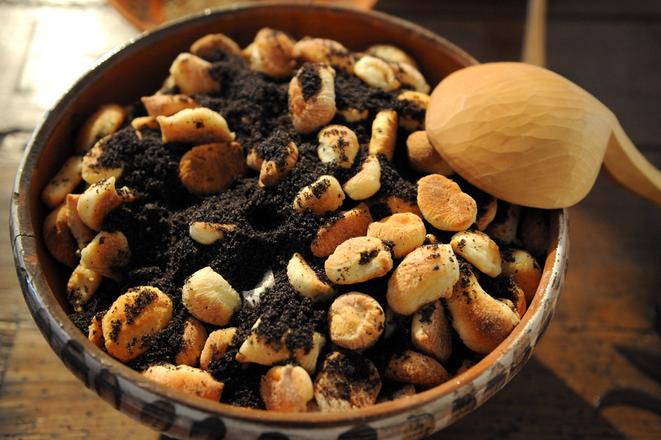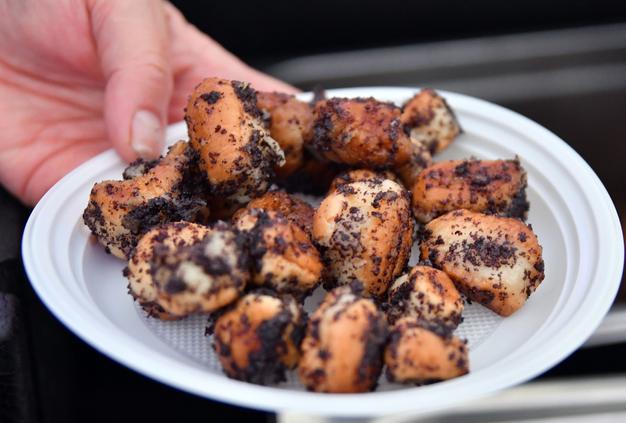In most of Slovakia, opekance, bobaľky or pupáky are an integral part of Christmas Eve dinner. In part, as a memento of the traditions maintained by grandmothers. However, they used to be on tables all year round.
Slovaks use up to three different names to describe these baked round pieces of dough sprinkled with poppy seeds or sheep cheese known as bryndza.Slovaks use up to three different names to describe these baked round pieces of dough sprinkled with poppy seeds or sheep cheese known as bryndza .
The name bobaľky is well-known especially in eastern Slovakia, from Spiš to the Ruthenian region. Ukrainian dialects are also familiar with the word.
In the north of central Slovakia and in the Liptov region people used to call them bobále. Another variations of this word are bobáň and bobánik, which come from the Orava region. Linguist Šimon Ondruš maintains that they became widely known mainly thanks to the Orava poet Pavel Országh Hviezdoslav. In one of his poems, Dinner, he writes:
I keď umne-skumne pookaľoval najprv, zmeral hrádze, noštíkom sfňukal, zmrdkal fúzikom, tak asi zhádol smer, kde bobáň stydol: za ňuchom vľahce šuch-šuch dvorom,”“
The Orava poet wrote several Christmas-themed poems. Bobáň is a dialect word that means a piece of bread dough.
In western and central Slovakia, people often go for opekance. In the villages around Žiar nad Hronom, people believed that if one opekanec fell on the floor while slicing it, someone in the family would die.
People in south Slovakia know opekance also as pupáky, pupáčiky and pupále. We can hear people call them this in the regions of Novohrad and Gemer.
The Hungarians living near the southern border use the words pupáky or bobáľky as well, but they have changed them a little, to bobajka and pupácska, writes Štefan Knieža in his work, Slovanské výpožičky v maďarčine (Slavic Borrowings in Hungarian).
However, all the terms mentioned above refer to food made from round pieces of dough.

Ethnologist Katarína Nádaská also mentions lámance, which inhabitants of the Upper Nitra region are familiar with. However, these are no longer traditional round dough balls. Instead, the dough is rolled out, baked as a whole, and then broken into smaller pieces. Like opekance, butter is poured over them and they are sprinkled with poppy seeds.
Housewives up at three in the morning
Christmas Eve dinner used to consist of meals eaten normally throughout the year. Nádaská claims their presence at the festive table symbolised abundance and plenty of varied food during the following year. This is how opekance appeared on the Christmas menu as well.
Their production has a double tradition in Slovakia. They could be fresh but also prepared a week in advance.
The fresh ones were made along with the last Christmas bread, baked on December 24, early in the morning. “The dough for bread was prepared the day before and housewives got up at three in the morning to finish it before midday,” says Nádaská.
Opekance by Terézia Vansová
Author Terézia Vansová describes how to prepare traditional opekance (baked dough balls) in her cookbook, Recepty prastarej matere (Great-Grandmother’s Recipes), published in 1914. The recipes were published in the first women’s magazine Dennica. Vansová’s recipe reads as follows:
“Similar to pretzels, soak opekance in boiling water until soft. If they are still hard, leave them to rest for longer. Once strained, pour butter, honey or syrup over them. Sprinkle the opekance with crushed or ground poppy seeds. Opekance can also be served with bryndza. We prepare them in the same way as bryndzové halušky (potato dumplings with bryndza cheese) in this case. As for opekance with poppy seeds, melted honey or sugar is brought to the table.”
Balls were formed and put into the oven from the remaining dough.
If opekance were baked a week before Christmas, they were then left to dry. It was enough to soak them in milk on December 24. Housewives sprinkled opekance with poppy seeds and roasted them in a pan.
Poppy seeds as magic, bryndza as luxury
Most Slovaks know opekance as a sweet pastry. It was no coincidence that opekance were topped with poppy seeds. Nádaská says the seeds had a magical power.
“It was said that they protected people from negative forces. There existed the belief that, for example, the witches tour ancestors feared had to collect every poppy seed before they reached a dwelling. The poppy was considered a sacred and protective crop.”
However, it is also traditional to use bryndza, bacon and fried onions instead of poppy seeds. This variation was widespread in sheep-breeding regions in northern Slovakia. Wallachian culture also brought along a way of making bryndza.
Today, we like to describe bryndza as a typical nationwide Slovak product. However, in the ethnologist’s opinion, this was not the case in the past. Only the aforementioned sheep-breeding regions knew about bryndza.
“People in the Záhorie region or in the south of Slovakia did not know this sheep cheese until the 1940s. That did not change until 1945, when high-speed roads began to be constructed on a large scale. Over time, there were more roadhouses accompanied by popular bryndza dishes throughout the country,” she adds.

In the case of opekance, bryndza was not associated with magic. Rather, it referred to a form of luxury. Its production was demanding, and people very much appreciated the pastry. They perceived it as a gem, so it earned a place at the Christmas table.
Tradition of eating opekance from one bowl
In the past, during Christmas Eve dinner, opekance had a firm place. People ate them after the legumes.
“The first was a toast, in the wine-growing areas a glass of wine. Elsewhere, it was hriato, a brandy with a piece of fried bacon. Wafers with honey and garlic followed, then Christmas Eve soup, semolina, legumes and opekance,” describes the ethnologist.
The tradition of eating from one bowl, which some families have preserved to date, is also mentioned when it comes to opekance. However, Nádaská says that it was not linked just to Christmas. This manner of shared eating was very widespread in the Slovak territory until the 1920s and 1930s.
“People used special wooden spoons that were deeper than today’s spoons. It is one of the oldest customs, which symbolised family cohesion. A large bowl of halušky or opekance was placed in the middle of the table, and everyone used their own spoon.”
This style of eating was gradually abandoned in families, but the tradition was maintained for a long time during Christmas Eve. In the days when family members began to leave the household, the common bowl became a symbol of home as a place one can always return to.
© Sme
Author: Radoslava Baňovič Morongová

 Opekance with poppy seeds. (source: TASR)
Opekance with poppy seeds. (source: TASR)
 Traditional Slovak dough balls should never be missing from a Christmas table. (source: TASR)
Traditional Slovak dough balls should never be missing from a Christmas table. (source: TASR)